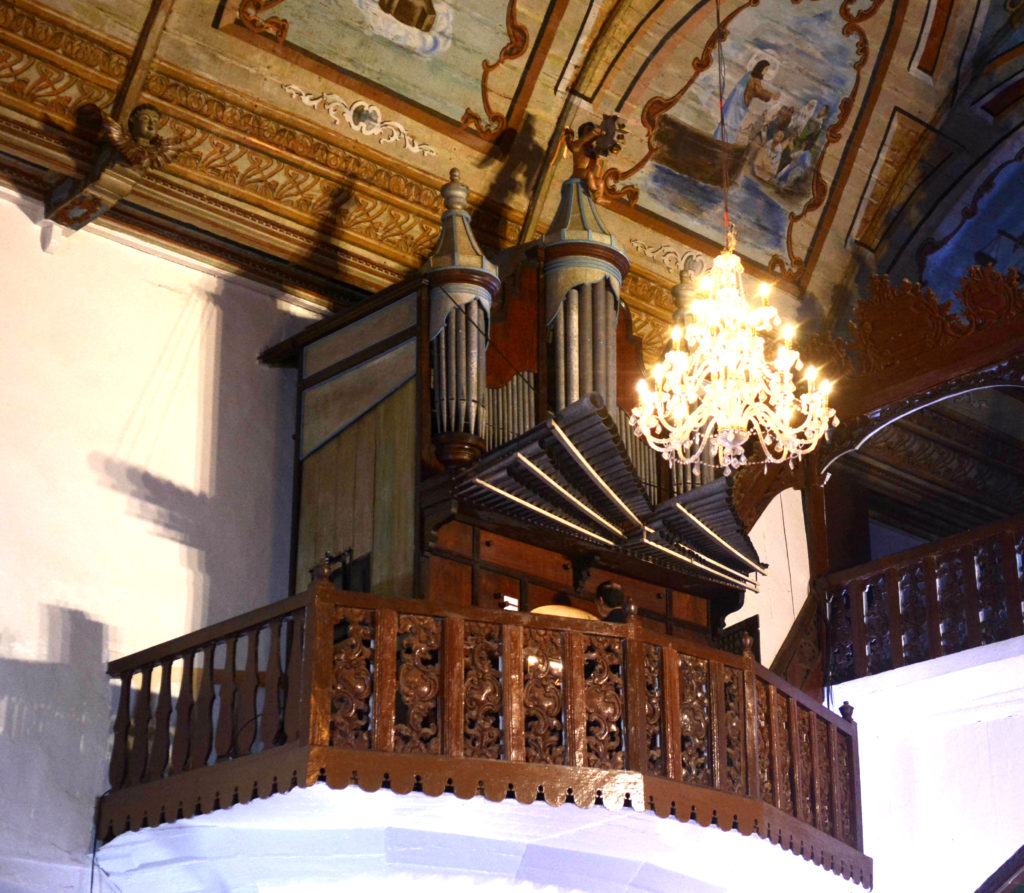
A concert featuring the newly restored pipe organ of the San Miguel Archangel (St. Michael the Archangel) Church in Argao town drew a crowd of a thousand faithful.
After more than 40 years of silence, Argao town’s historic pipe organ was played anew to a new generation of Catholic faithful at the Archdiocesan Shrine of St. Michael the Archangel last Saturday evening.
From sacred music to Christmas songs, the pipe organ – dubbed by Church leaders as the “instrument of angels” – entranced the 1,000 faithful in attendance as it was played by internationallyacclaimed concert organist Armando Salarza.
Salarza, also a harpsichordist, conductor and the titular organist of the Bamboo Organ of Las Piñas City, was joined by the shrine’s lead choir, the Minstrels and Argao’s Colawin Rondalla in performing for the audience.
Cebu Archbishop Jose Palma lauded the people who were instrumental in restoring Argao’s pipe organ.
“After 40 years of silencio, now the pipe organ gives us the music. After the silence follows a beautiful music,” he said in a message during the concert dubbed as “Awit-Halad pipe organ concert.”
“That’s why I’m very happy for the church of St. Michael in Argao, and for Cebu. May the music have an influence in our lives so that we may glorify the source of all music and all that is beautiful: God,” the 67-year-old Palma said.
Msgr. Camilo Alia, the moderator of the team of pastors in Argao, said Argao’s pipe organ has been an enduring symbol of Cebu’s culture, history, and heritage.
“This is a historic night. What is more fitting than to thank and praise God through the “Awit-Halad concert” with the accompaniment of the newly-restored pipe organ. We have heard its beautiful sound. What a gift this has been,” he said.
Argao’s musical masterpiece was said to have been installed in the 1800s by Padre Diego Cera, an Augustinian Recollect priest from Graus, Spain.
The Diego Cera Organ Builders Inc., curator of the world-famous bamboo organ of Las Piñas, was commissioned to repair Argao’s pipe organ.
The repairs began shortly after the local church underwent a massive restoration following the 7.2 magnitude earthquake that rocked Cebu and neighboring Bohol in October 2013.
The National Historical Commission of the Philippines (NHCP), in collaboration with the Department of Tourism, spent P4 million for the restoration of the pipe organ which started in 2015.
Fr. Brian Brigoli, chairperson of the Cebu Archdiocesan Commission on Culture and Heritage, said the pipe organ plays an important role in rendering music that inspires and uplifts people.
Brigoli said the concert and the inauguration of the newly-restored pipe organ in Argao conveyed a deeper meaning.
“Our gathering is not only meant for entertainment and not just to feed our curiosity of how the pipe organ would sound, but we are here for more,” he said.
Fr. Brigoli said the work for the conservation of the pipe organ continues.
“It does not end here, but this is just another step of the way,” he said.
Brigoli said the Church, the local government, and NHCP envisioned to train local organists to keep the organ alive.
“We also envision to hold an organ festival periodically if not annually to inspire the present generation so as to encourage involvement in the conservation efforts,” he said.
Fr. Brigoli said the pipe organ has to be used at least seven hours a week or two hours daily to preserve it.
The centuries-old musical instrument in Argao is among the three pipe organs in Cebu that date back to the Spanish colonial period.
The two others are found in the towns of Dalaguete and Boljoon.
Two bigger pipe organs were also installed at the Basilica Minore del Sto. Niño in 1965, and the Cebu Metropolitan Cathedral in 1996.
Argao church’s pipe organ has 700 pipes with 22 different timbres that provides a variety of sounds depending on the preference of the person who uses it.
It was described by professional organ makers as having “windchests constructed from a massive solid wood,” and shares similarities with the casework of the pipe organ of the San Agustin Church in Intramuros, Manila.
“The historic pipe organ of Argao is restored to its previous glory, ready to further inspire us with her melodic and harmonic tune and to render us the musica sacra (sacred music) that uplifts our spirit,” Brigoli said.
“Church music affects not only how we worship, but also what we believe. Ultimately, what we believe affects how we live our lives,” he said.
Disclaimer: The comments uploaded on this site do not necessarily represent or reflect the views of management and owner of Cebudailynews. We reserve the right to exclude comments that we deem to be inconsistent with our editorial standards.
